Waxed and Waned
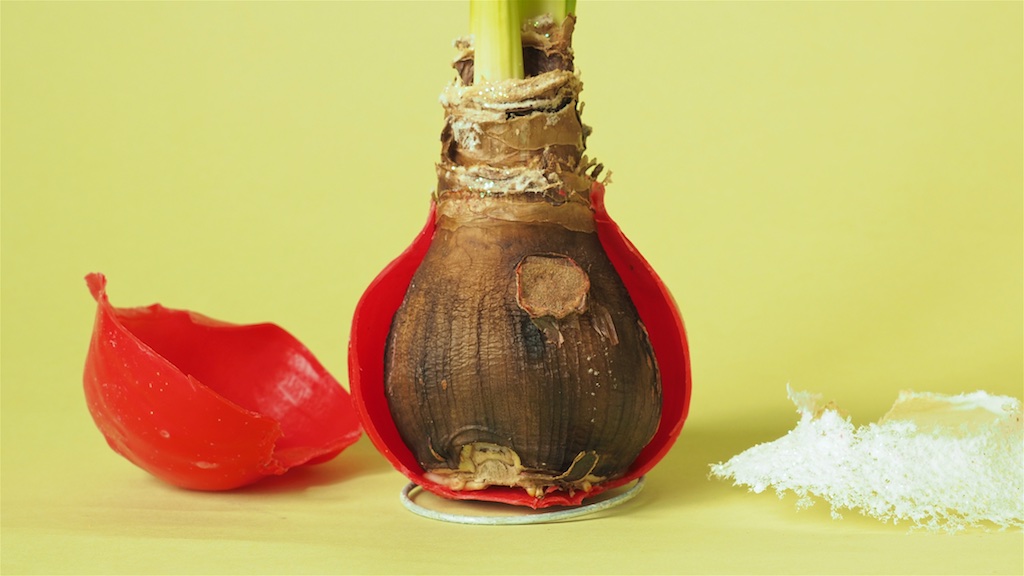
Sticking one’s head in the sand is simply a way to postpone the inevitable. While the appearance of wax coated amaryllis bulbs is nothing new, wishing the trend would go away just hasn’t worked. In fact, waxed bulbs have been selling in markedly increasing numbers for several years. Emaryllis has finally decided to perform an act of due diligence, and report on the matter, like it or not. Actually mostly the latter.
Here’s the idea. Hippeastrum bulbs are big and juicy. They are capable of emerging from a period of dry, cool storage (which shunts water to flower production rather than foliage) and push flower scapes up and out, even without functioning roots. But who would buy a dry bulb and just let it do that? It would never stand upright, and the whole affair would be rather grim. Cue the Dutch producers of said bulbs, who sell them by the hundreds of thousands yearly. Why not gussie these beasts of burden up in colorful holiday attire, and present them as the ultimate in floral simplicity? No water, no care needed. The spectacle of growth and bloom in one’s darkened winter interior, just when spirits need a lift the most. Enter a new category of sales; the amaryllis novelty. Easy, fun, and best of all for future sales, deliberately disposable.
Around Thanksgiving 2018 here in the U.S., a stop at a major big box store (Lowe’s in this case) resulted in a purchase deemed resonable enough in price ($14) to build on the Emaryllis tradition of box kit critique with an updated take. Here is our subject, purchased 22 November, 2018:
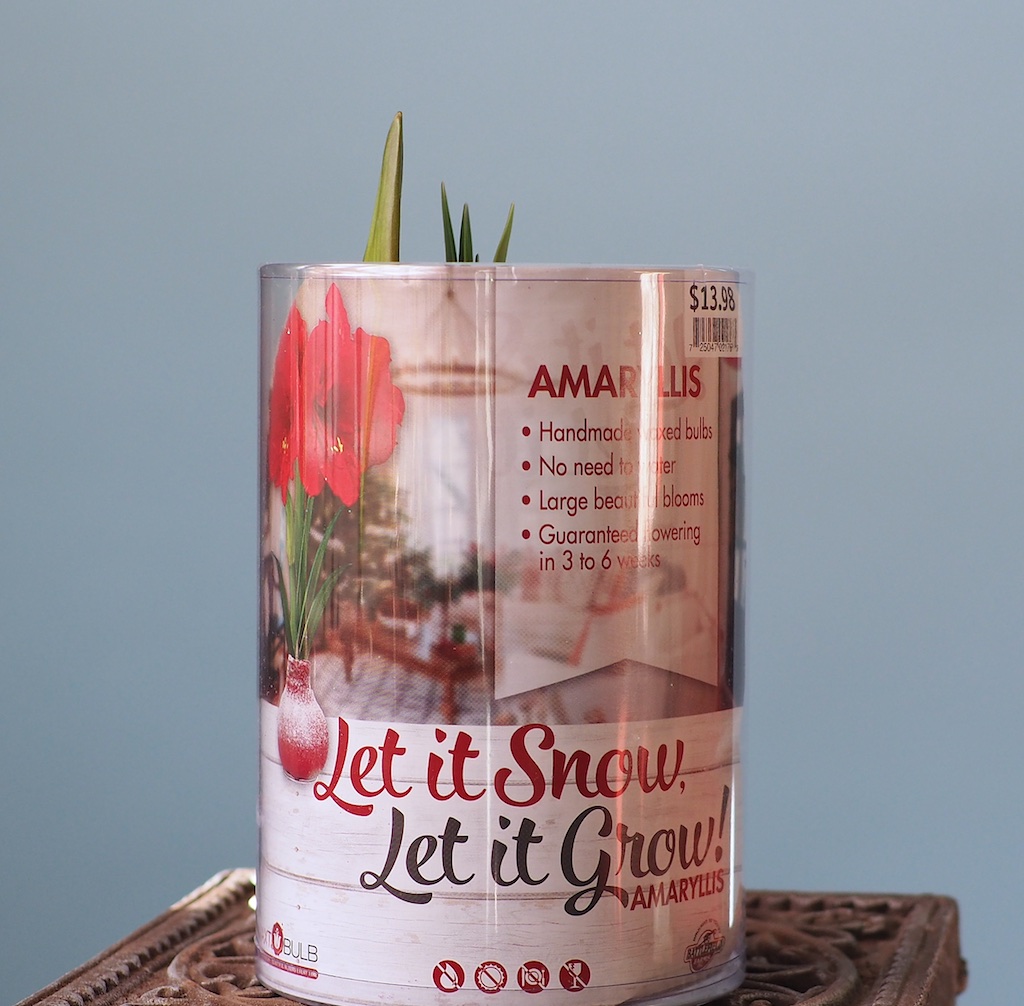
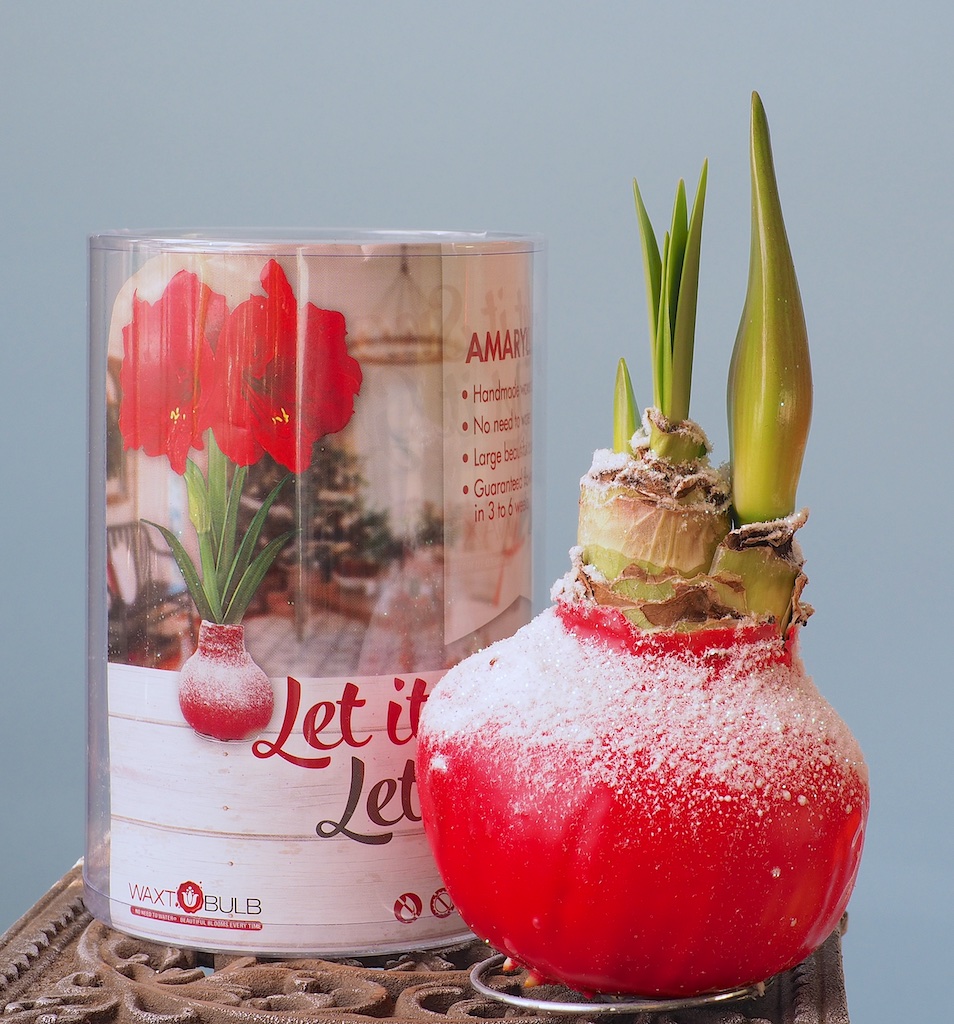
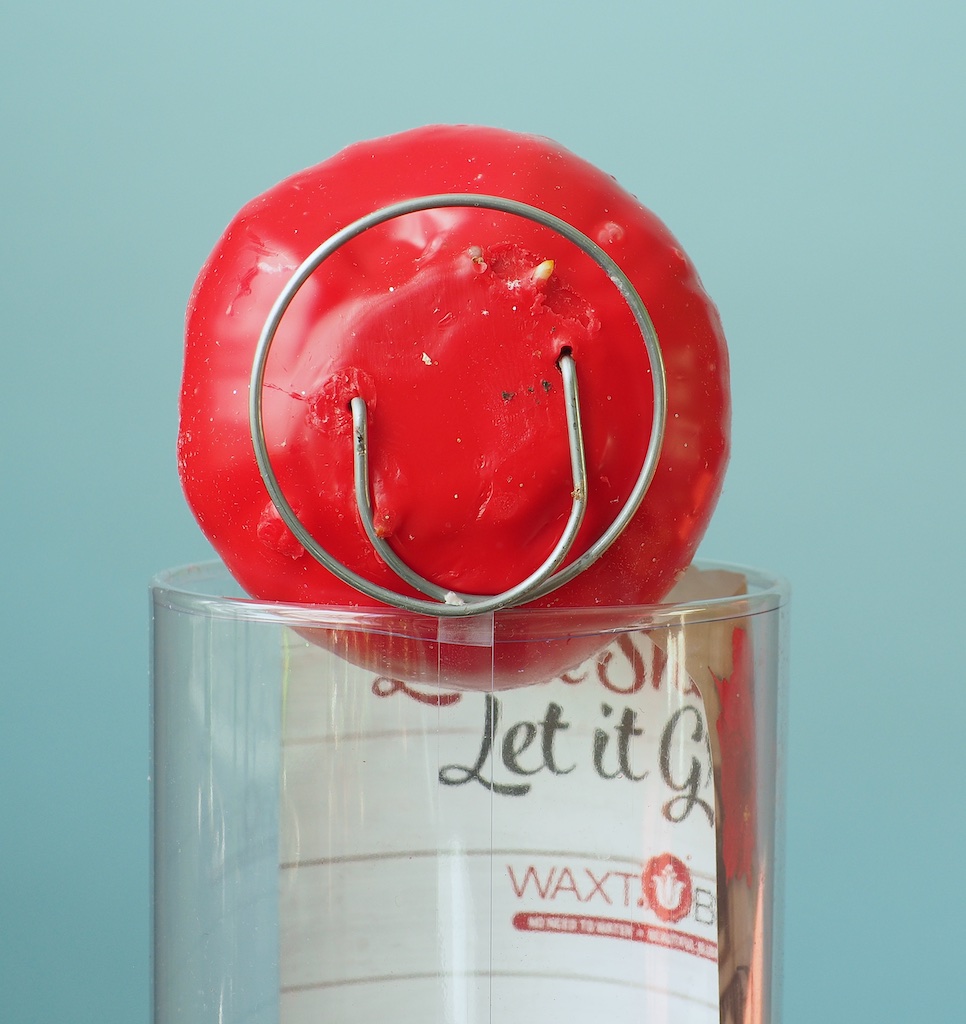
So that’s our “kit,” just remove from plastic cylinder and incorporate into your holiday decorating scheme and you are off and running. Please do give it a bright spot though, it is still a living plant. What? They need some sort of care? Oh, Emaryllis, you are such a buzzkill.
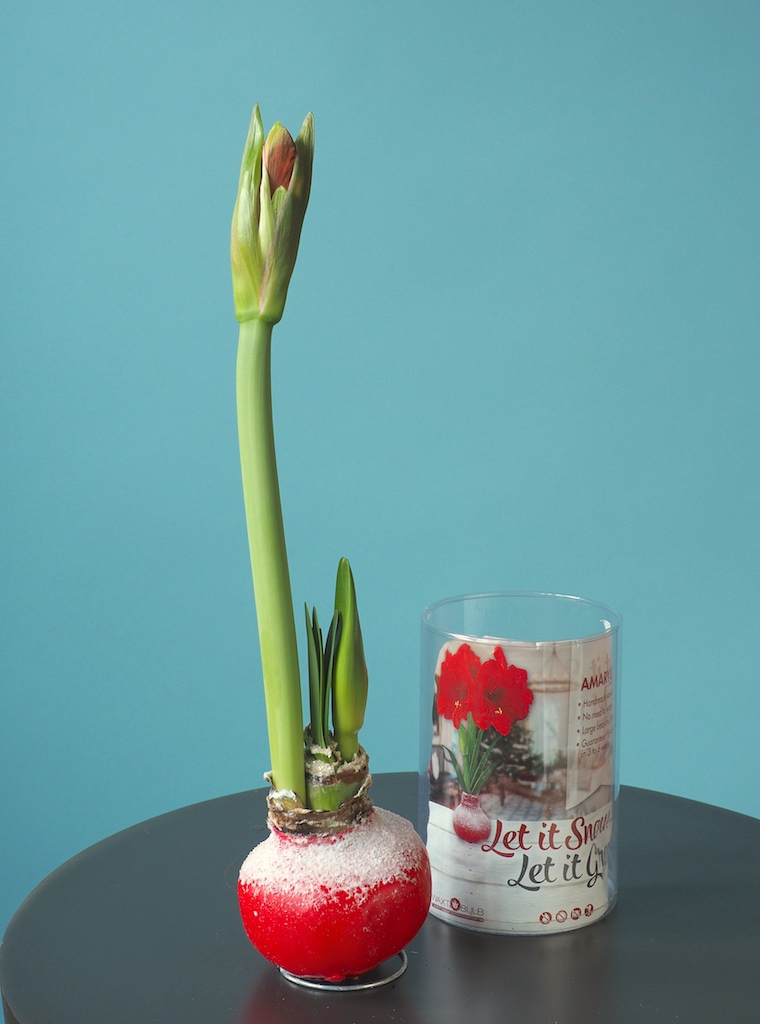
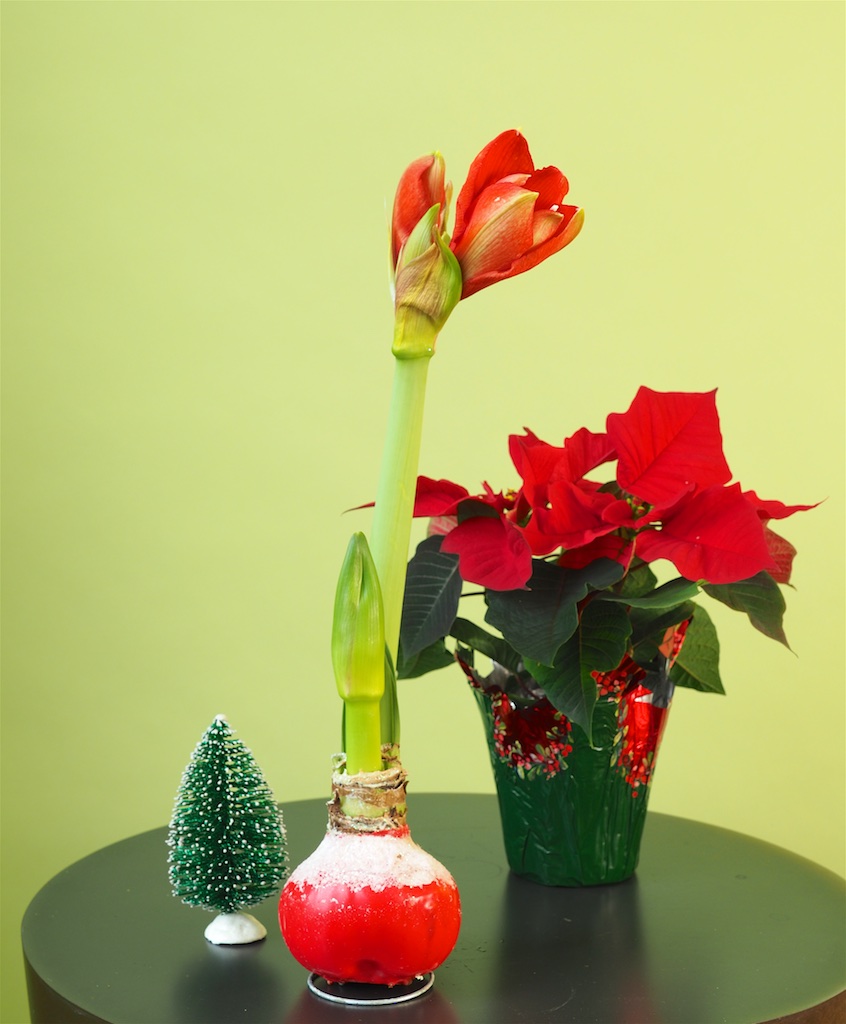
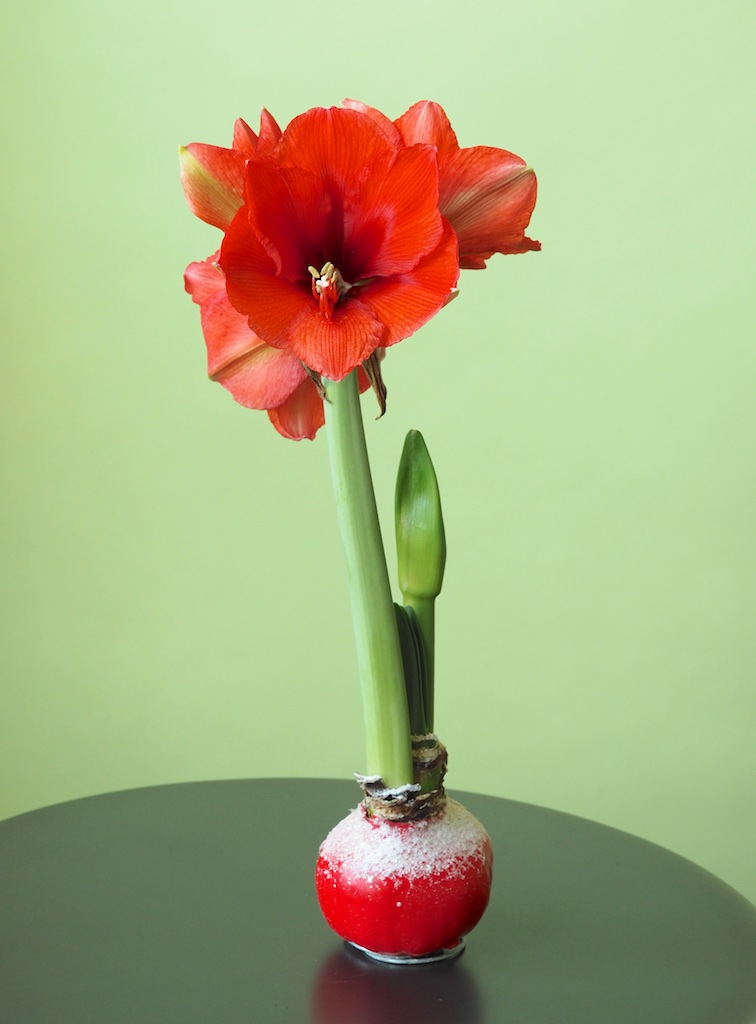
This is actually working pretty well it would seem. Why has Emaryllis been so unwilling to embrace this concept? I’ll tell you why. A knowledge of biological sciences (horticulture in particular). This flowering looks OK, but in actuality the flowers are not opening as fully as they should, and they are most definitely not lasting as long as normal. Pollen shedding is significant, something usually associated with potted bulbs that haven’t rooted in yet. Therein lies the rub. While the bulb scales are allocating moisture reserves to the flowering process in order to hopefully produce seed, there just isn’t as much as there should be if even marginally functioning roots were able to as is often the case for newly potted dry bulbs. Nevertheless, it is making a valiant effort, and Christmas flowers (whatever the quality) were had.
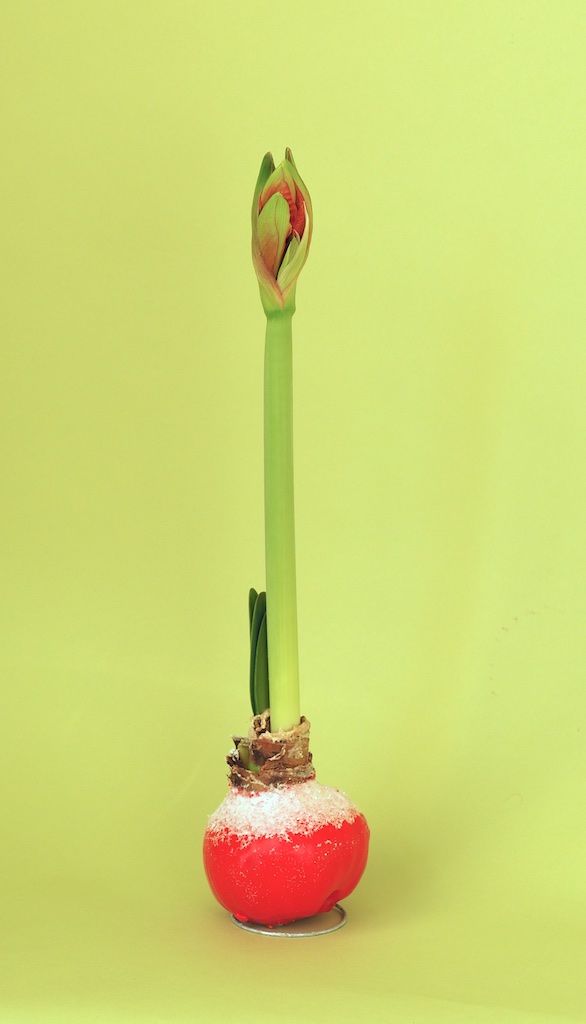

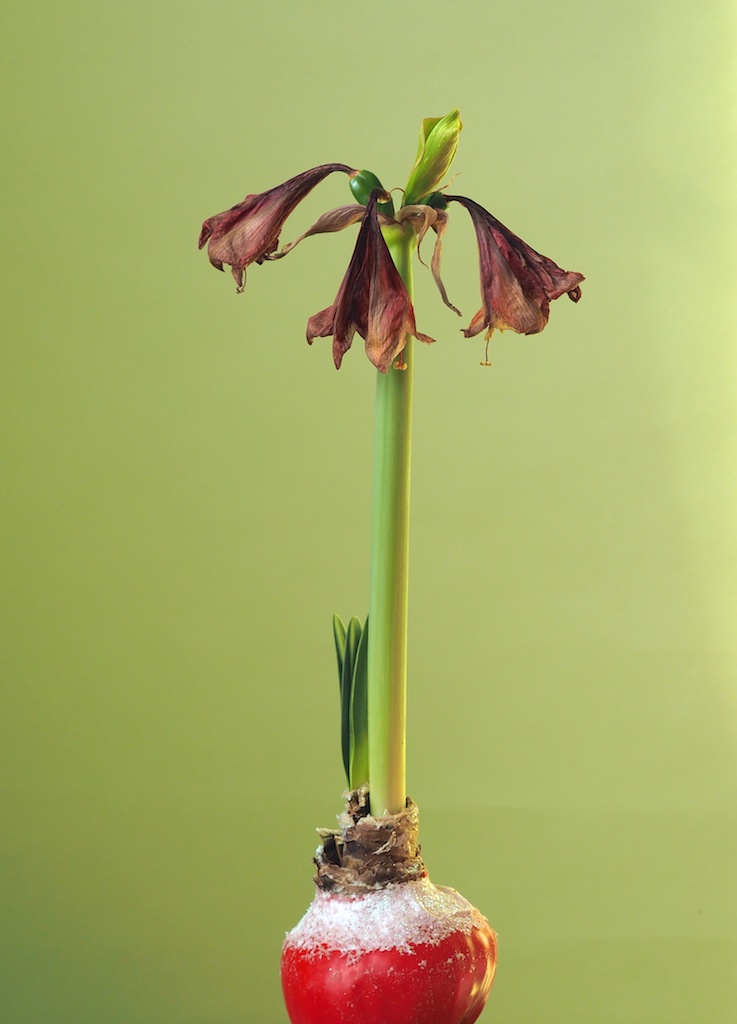
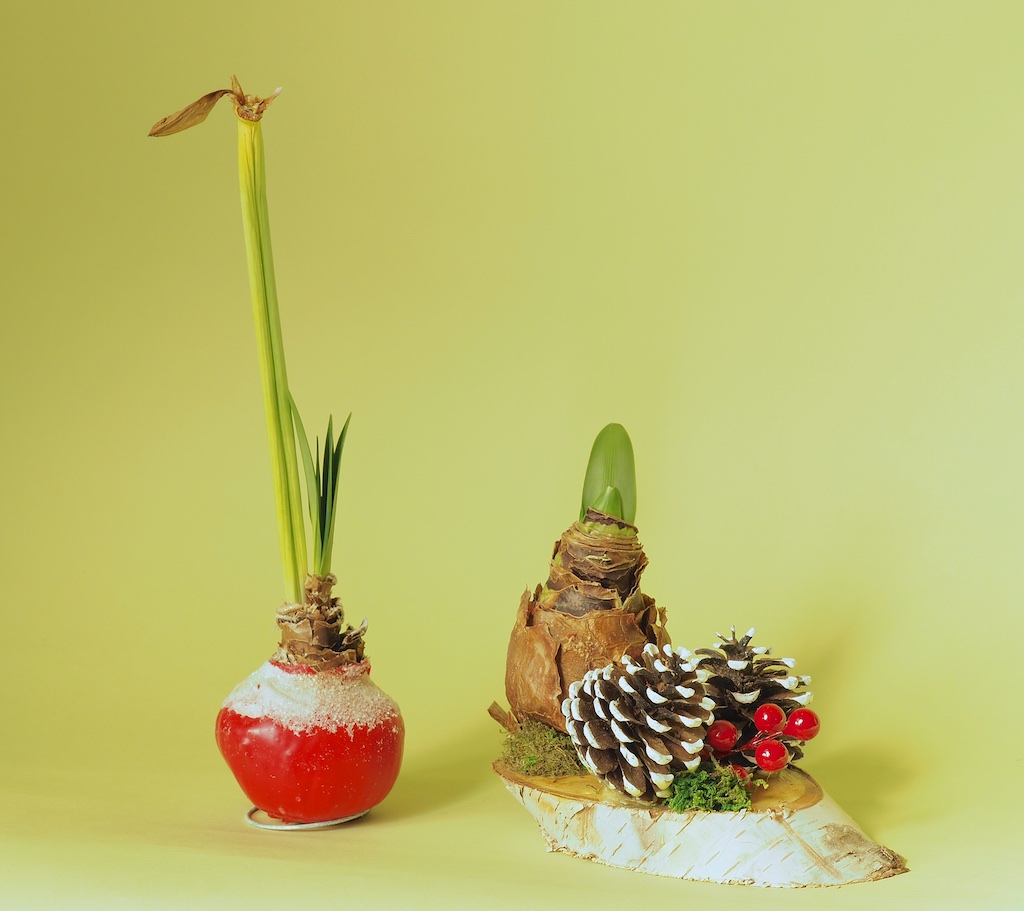
Here’s a quandry I don’t think marketers have thought about beyond the initial point of sale. If one buys these at the approach of the winter holidays, will such obviously “Christmassy” novelties be appreciated as they continue to hobble along so long after holiday decor has been put back in storage? Poinsettia growers trying to market out of season have already answered that question. In trying to sell pink cultivars for Valentine’s Day for example, the public wasn’t having it. Poor sales answered with a resounding “no, thanks.” Emaryllis is currently hiding that wood-mounted novelty on a floor register well out of sight, hoping the increased heat will speed that last scape along. And as for the red and white waxed bulb? Time for surgery.
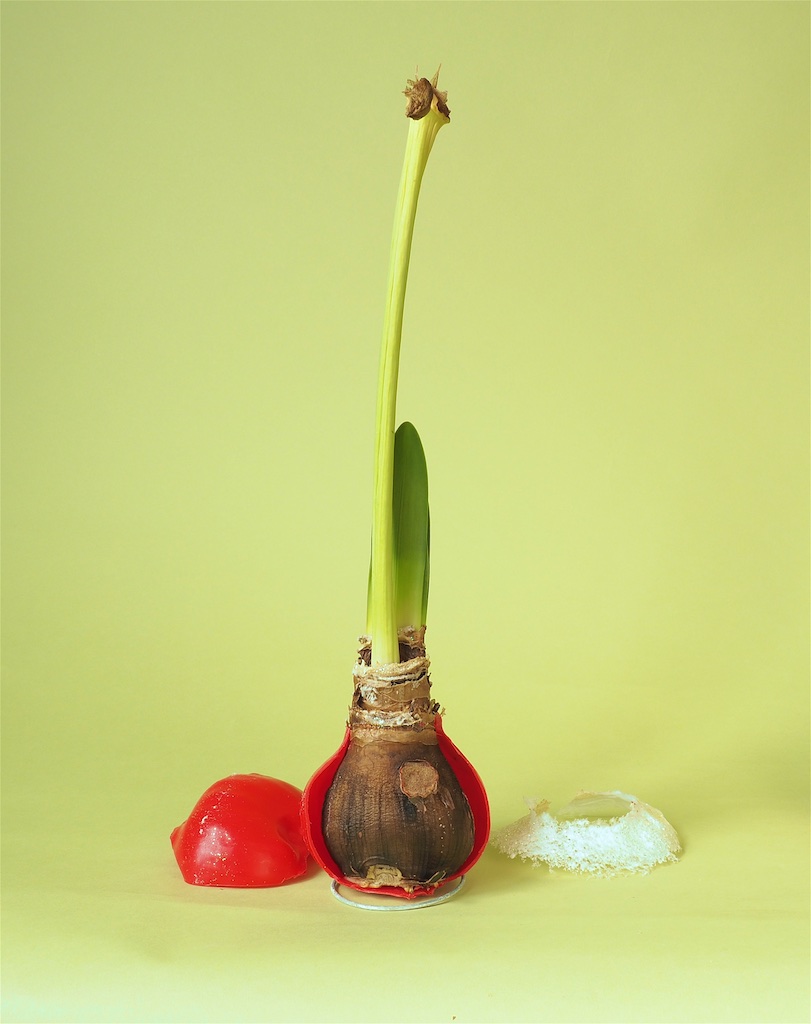
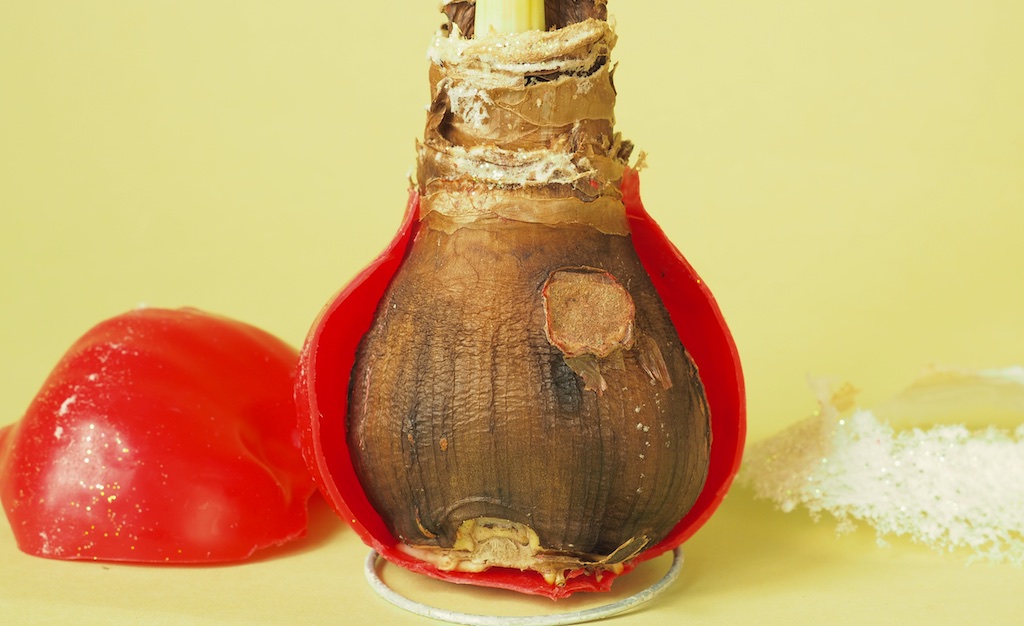
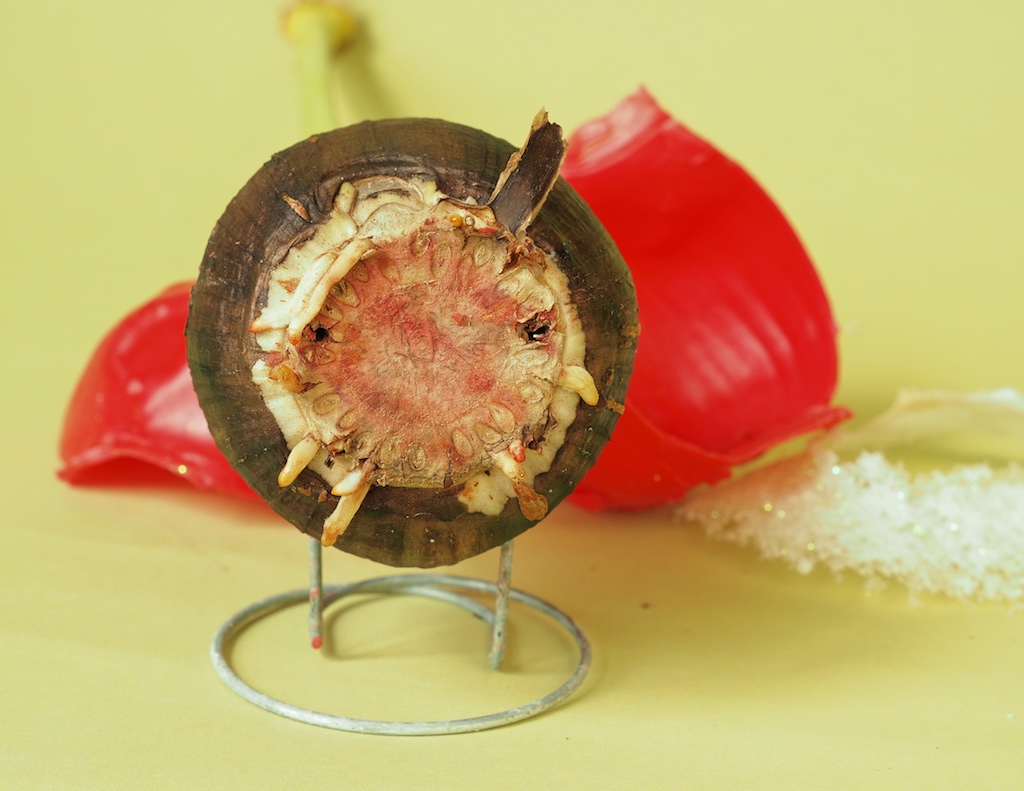
There you have it. Is Emaryllis going to judge you for trying one of these, or for gifting it to another? Only a little. While the bulb industry (and many other plant industries) prospers on disposable crops, these amaryllis bulbs can offer so much more in terms of performance under better conditions. This would not be ideal for gifting to a child; nothing is to be learned by watching something with the potential to thrive and even bloom another year simply go into the waste bin once finished. Long live the box kit in that arena! Cut flowers are probably a better way to give the gift of seasonal, fleeting cheer without guilt. As a bonus, most amaryllis flowers in last longer as cuts than they do when connected to the bulb!
All said, as a product that keeps an innovative horticultural industry profitable, I can’t rail against this trend in a high-handed way. Still, I hope it doesn’t diminish people’s view of the noble amaryllis as beacon of the winter doldrums when they can truly amaze and delight with just a little bit of effort. If you want to know just how far this concept is going, check here, and let us know what you think in the comments.
*Update 2020! What a difference a year makes. ‘Olaf’ was re-homed into a very small pot…the better to quickly fill with roots, and thereby fertilize and water frequently. The plant grew vigorously outdoors through the summer of 2019. After a cool dry rest, it began pushing scapes in January 2020. By late February we have what you see below…a nearly perfect example of what a happy ‘Olaf’ amaryllis can do. Perhaps we don’t have to think of waxed amaryllis bulbs as disposable after all 🙂
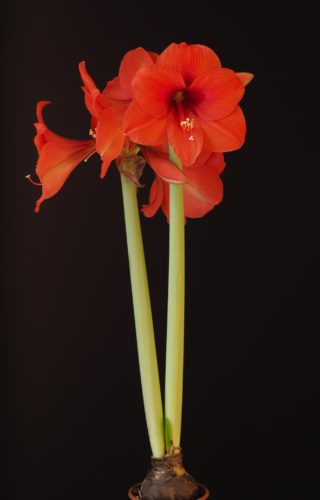

I thought a waxed amyryllis bulb would be perfect to give to a nursing home resident. It requires no care and needs only a small space and gives the person something to watch as it grows. Unfortunately, the 2 bulbs that I tried did not grow. All that I got was about two inches of growth. When I removed the wax and suspended the bulb in water they grew and flowered.
Thanks Bill ! This article was just what I needed. I melted off the plastic ” prison” as Pritch called it) with a lighter 😂 and chipped away at the coating. Then I potted the bulb in moist potting soil. It hasn’t bloomed yet. I just couldn’t stand not putting it up . . The flower bud looks to be deflating a bit but I’m hoping to save the bulb. . .
Happy to help, Lani! I hope you succeed with it next year…it may only hint at its possible performance on this bloom.
Thanks, Emaryllis, for your wonderful site in general and espacially for this post on a very sad aspect of “cultivating” Hipeastrum.
It’s a nuisance, to say the least, and I wonder how anyone can take pleasure in watching a flower killing itself by blooming to death – but this “trend” is obviously unstoppable. In fact, here in Germany, those waxed bulbs have seemed to gain popularity during the last three years or so.
A lot of people, however, toss their bulbs anyway, once they have finished blooming, and that is equally sad.
I have rescued a lot of these bulbs, which are usually given to me when the flowering season finishes. Now I happen to have lots of space, but even I can’t keep all these “Minervas”, “Red Lions” or “Christmas Gifts”. So I try to grow them healthily and then give them away at the start of the new season, hoping for the best. Maybe you’ll find someone you can give your Olaf to, and hopefully it will be someone who will take good care of it. It is very predictable, though, that it will take the plant two or even three seasons to recover completely – I’ve seen it happen!
Best wishes and happy growing!
Thanks for writing in from Germany, Tom. The trend seems to be gaining here as well. The ‘Olaf’ seen here is currently rooting into a new pot, and seems pretty healthy, so it will be grown on. I have very limited space, so must make decisions each season on what I can keep. First, I eliminate most of those with virus infection, then more common ones that I have several bulbs of. Some get donated to local gardens, as most of my friends would rather give me their amaryllis plants than receive any more from me! Happy growing to you as well Tom!
Good to hear these news, Emaryllis! Love from Germany to you and to everybody who is visiting your beautiful site (which enabled me to identify one of my amazing dark Hippeastrum as “Queen Of The Night” – thanks to your Gallery! Happy growing!
Tom